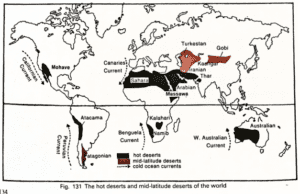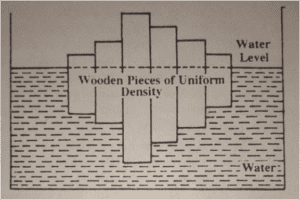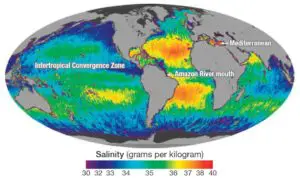Table of Contents
Exploring the Bottom-Relief Features of the Atlantic Ocean
Introduction
As a teacher, I am excited to explore the bottom-relief features of the Atlantic Ocean with my students. The Atlantic Ocean is full of fascinating geography and morphology, including the Mid-Atlantic Ridge, ocean deeps, marginal seas, ocean basins, abyssal plains, seamounts, trenches, and rift valleys. Let’s dive deeper into these features and uncover the significance of understanding the bottom relief of the Atlantic Ocean.
Bottom Relief Features of the Atlantic Ocean
- Mid-Atlantic Ridge: A massive underwater mountain range running down the center of the Atlantic Ocean, marking a divergent plate boundary.
- Ocean Deeps: Various deep ocean trenches exist, such as Nares Deep, Puerto Rico Deep, and Tizard Deep.
- Marginal Seas: Significant marginal seas include the Mediterranean Sea, Caribbean Sea, and Gulf of Mexico.
- Ocean Basins: The Atlantic Ocean is divided into East and West Atlantic Basins by the Mid-Atlantic Ridge.
- Abyssal Plains: Flat, sediment-covered regions of the deep ocean floor lying at depths of 3,000 to 6,000 meters.
- Seamounts: Mountains or volcanoes rising from the seafloor but not reaching the ocean surface.
- Trenches: Deep, narrow depressions in the seafloor, such as the Puerto Rico Trench and Romanche Trench.
- Rift Valleys: Geological features associated with tectonic plate movements.
Significance of the Mid-Atlantic Ridge
The Mid-Atlantic Ridge plays a crucial role in recording the direction of the Earth’s magnetic field through seafloor spreading. The ridge is important for studying the Earth’s geological history, marine life, and ocean circulation patterns. It also influences the distribution of ocean depths, seamounts, and trenches in the Atlantic Ocean.
Impact on the Earth’s Magnetic Field
The Mid-Atlantic Ridge affects the Earth’s magnetic field by forming basaltic lava that becomes magnetized in the direction of the field at the time of eruption. This lava records magnetic polarity stripes, providing insights into the Earth’s magnetic field reversals over time.
Geography of the Atlantic Ocean
The Atlantic Ocean is the second-largest ocean in the world, covering approximately 20% of the Earth’s surface. It separates Europe and Africa from the Americas and is home to various features such as the Mid-Atlantic Ridge and Puerto Rico Trench. The ocean’s irregular coasts are indented by numerous bays, gulfs, and seas, making it a diverse and vibrant ecosystem.
Fun Fact
The Atlantic Ocean is known for its hurricanes, which mostly form between June and November each year. These powerful storms play a significant role in shaping the ocean’s weather patterns and marine life.
Conclusion
Exploring the bottom-relief features of the Atlantic Ocean is not only educational but also exciting. Understanding the geography and morphology of the ocean helps us appreciate the Earth’s natural beauty and complexity. As we continue to study the Atlantic Ocean’s bottom relief, we uncover the mysteries of our planet’s history and evolution.
Mutiple Choice Questions
1. What is the Mid-Atlantic Ridge?
a) A deep ocean trench in the Atlantic Ocean
b) A mountain range separating the North American plate from the Eurasian plate
c) A volcanic island in the middle of the Atlantic Ocean
d) A large seamount in the Atlantic Ocean
Answer: b) A mountain range separating the North American plate from the Eurasian plate
Explanation: The Mid-Atlantic Ridge is a submarine mountain range that runs along the floor of the Atlantic Ocean, separating the North American plate from the Eurasian plate.
2. Which of the following is NOT a bottom relief feature of the Atlantic Ocean?
a) Ocean Deeps
b) Marginal Seas
c) Abyssal Plains
d) Coral Reefs
Answer: d) Coral Reefs
Explanation: Coral reefs are not a bottom relief feature of the Atlantic Ocean. The other options listed are actual bottom relief features of the Atlantic Ocean.
3. How do basaltic lava formations at the Mid-Atlantic Ridge help in recording the Earth’s magnetic field?
a) By trapping magnetic minerals within the lava
b) By releasing magnetic energy into the water
c) By reflecting sound waves back to the source
d) By creating earthquakes along the ocean floor
Answer: a) By trapping magnetic minerals within the lava
Explanation: Basaltic lava formations at the Mid-Atlantic Ridge become magnetized in the direction of the Earth’s magnetic field at the time of eruption, which helps in recording the Earth’s magnetic field reversals over time.
4. How does the Mid-Atlantic Ridge influence the distribution of ocean depths in the Atlantic Ocean?
a) By causing earthquakes along the seafloor
b) By creating a central rift valley that separates the ocean into two major basins
c) By forming large seamounts along the ridge
d) By causing volcanic eruptions on neighboring islands
Answer: b) By creating a central rift valley that separates the ocean into two major basins
Explanation: The Mid-Atlantic Ridge influences the distribution of ocean depths by creating a central rift valley that separates the Atlantic Ocean into two major basins, the East and West Atlantic Basins.
5. What is the significance of the Mid-Atlantic Ridge in studying the Earth’s magnetic field changes?
a) It helps in predicting volcanic eruptions
b) It provides a record of the Earth’s magnetic field reversals over time
c) It helps in mapping the distribution of coral reefs
d) It influences the formation of ocean trenches
Answer: b) It provides a record of the Earth’s magnetic field reversals over time
Explanation: The Mid-Atlantic Ridge provides a valuable record of the Earth’s magnetic field reversals over time, which allows scientists to study and understand changes in the Earth’s magnetic field.
Brief Summary | UPSC – IAS
The article explains the bottom-relief features of the Atlantic Ocean, including the Mid-Atlantic Ridge, ocean trenches, marginal seas, ocean basins, abyssal plains, seamounts, trenches, and rift valleys. These features play a key role in understanding the ocean’s geological history, marine life, and circulation patterns. The Mid-Atlantic Ridge is significant in recording the Earth’s magnetic field reversals over time. The Atlantic Ocean is the second-largest in the world, divided into North and South Atlantic basins by the Equator. It is known for its irregular coasts, diverse marine life, and significant features such as the Mid-Atlantic Ridge and the Puerto Rico Trench.



